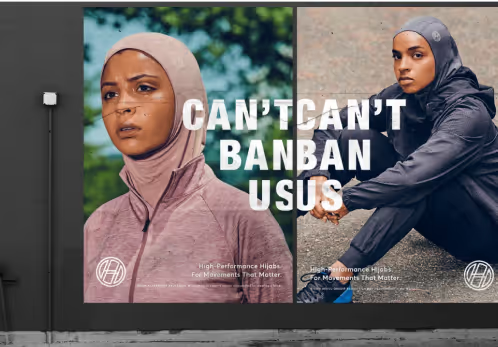Looking for our most current insights? Read Navigating the Crossroads: Technology, Authenticity, and the Future of Challenger Brands for thought provoking observations and questions for 2024.
How Challenger Brands will disrupt growth marketing in the year to come.
1. A reliance on organic growth for acquisition
Sweeping structural changes will impact the future of paid advertising. Running paid ads on social media used to be a reliable, cost effective way to get in front of customers. Instagram and Facebook ads were especially important tools for direct-to-consumer brands that were relatively unknown and didn’t have budgets for traditional advertising like incumbents.
Over the last couple of years, that’s changed, with once helpful tools becoming overused and too expensive. As Andrew Chen, general partner at Andreessen Horowitz, rightfully pointed out, going hard on just paid advertising is an addiction startups need to break. The cost of acquiring customers through paid social ads is getting too expensive to depend on for healthy growth.
As a result, successful startups in 2021 will get back to basics with a focus on organic growth, paying equal attention to owned and earned media to complement their paid strategy. A solid foundation of evergreen content, amplified with an organic social media strategy, loyal customer community, and a strong PR narrative takes the pressure off of paid channels to solely deliver results.
2. The growth of personalized, conversational growth marketing
Customers who’ve grown accustomed to shopping almost exclusively online for the past year have high expectations when it comes to experience. As growth marketers, we need to ensure we’re exceeding them. If not, more bottom-funnel customers will abandon their carts.
In the past, it’s been digital chat bots and online “stylists” that you can chat with real-time. In 2021, personalization will go a step further.
The future of bottom-of-funnel conversion is best exemplified by 5&Vine client Answerable. As a solution that lives at critical points of sale, Answerable is a browser extension that connects shoppers to a global network of brand advocates in real-time. Want to know if a specific shampoo is good for dry, curly hair? Ask someone who used it just this morning and they’ll tell you. By getting answers to questions about products from someone they can trust, customer experience is heightened and more sales are closed.
Peer-to-peer messaging platform Hustle is another example. Acquired by Chamath Palihapitiya in August 2020, with plans to “refine these critical interactions and foster greater connectivity between community-based organizations, non-profits, corporations and the people they serve,” the service allows brands to create more meaningful engagement through instant messaging. It comes on the back of 85% of consumers wanting to receive and reply to businesses via text.
3. Offering your competitive advantage in exchange for data
A core tenant of being a Challenger Brand is having the ability to ask yourself: Why? As soon as you ask a lead for their email, phone number, or to install an app on their personal device, they’re unconsciously asking the same. Be it at checkout, on a blog post or while scrolling Instagram, people are constantly being asked for their contact information.
In 2021, we’ll see brands immediately provide a utility or tool. Something that sets them apart from the competition and has a positive impact on the lives of their top-of-funnel customers.
Take Strava, an app for cyclists and runners. They’ve introduced a successful give and take when it comes to data. In return for signing up to their site, users receive exercise and workout tracking, as well as a number of social elements like event discovery, challenges, and interaction with other members; all while Strava is collecting and utilizing user data.
5&Vine client Borrowell is another great example of providing value from the first touchpoint. Their free credit score tool drives some of the highest top-of-funnel traffic to their website. Customers discover them while doing organic research, and can be remarketed to after discovery.
What’s important to note is that data will act as a brand’s strategic moat but, if you’re not applying it with empathy or genuine value, you’re exposed. Use the interaction to ignite acquisition and keep the growth flywheel moving. Think long-term and always aim at how it can help your customers.
4. Challenger Brands take on the Goliaths in chat, email and search
Privacy is becoming a greater concern for consumers. Last month, concerns circulated around Facebook’s changes to the WhatsApp terms of service, with many choosing to leave the platform. Naturally, a number of Challengers are entering the arena to pick up the slack.
Private messaging app Signal has become a major player in the messaging ecosystem and brands like Telegram (typically used by privacy advocates and journalists) have moved into the mainstream.
The same can be said for email. While Google has had the market locked down, hey.com and superhuman.com are two Challengers readying themselves for success in 2021. Hey is a direct email client and Superman links your existing mail accounts to create a faster, better experience.
In search too, Neeva, a subscription solution that makes the user the customer rather than the advertiser, is on the rise. Neeva was founded by Sridhar Ramaswamy (ex-SVP of Ads at Google) and Vivek Raghunathan (ex-VP of Monetization at YouTube). They met in the early days of search ads at Google.
It’s been readily assumed that the mega brands that currently control chat, email and search won’t be displaced. 2021 will introduce Challengers that rethink these expectations, impacting their associated ad models in the process.
5. Deeper integration between product, marketing and sales
It’s one thing to foster collaboration, but it’s another to put that into action within the product itself. Particularly with the deluge of integrated data dashboards on the market, the adage is nothing new.
Through 2021, we’ll see that integration come to fruition.
Are you set up for shared objectives that are measured through onboarding and post-install or sign up behaviours? Is each function collectively driving the key behaviours in the app that shape key metrics and create a memorable experience?
By having a holistic focus on customer experience, word-of-mouth is increased and reliance on paid media decreased.
This is the second last in a series of 5&Vine posts dedicated to looking at the trends that will shape 2021. Be sure to check out our round-up of trends that will impact Challenger Brands in the year to come.














